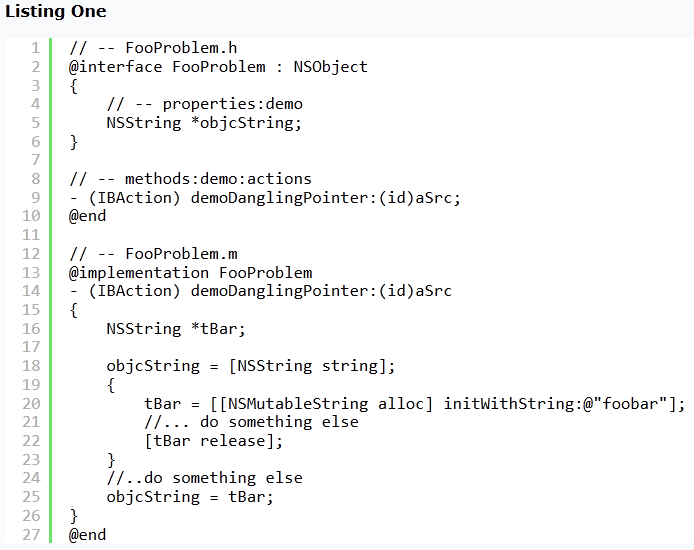Memory leaks in iOS Applications
How to find Memory leaks in iOS?
ARC can do only de-allocate the memory if we are not holding any suggestions
to it anymore. Since the instrument for leaks does not indicate any "genuine"
leaks (in the sense of memory that we do not have contact to anymore), we are almost
certainly seeing a case of abandoned the memory. We are still holding
references to objects which we do not require anymore, so they do not get de-allocated.
It does not really subject which snapshot us inspect after the base line.
The objects list in a snapshot can be some what overwhelming though... but
often it help to clean it down to our own class. We can do this by typing our
prefix of class into the field of search in the upper right. If none of our
class display up in the snap shot, we can at least look for classes which we use
directly.
Also confirm to activate the “counts of Record reference “alternative in the
inspector pane of the instrument of allocations. When we have this activated
then you can click on the little right arrow next to the substance listed in a
snapshot (not the name of class, but the objects represented by its address of memory)
and display a full history of such substances. This creates it simpler to see
who is griping references to it.
Management of Memory is debatably the hardest concept for programmer’s
beginner to hold. When we decided to go behind to school, we were needed to
take beginner’s programming classes since there is no alternative to test in to
courses of computer science. We witnessed the hair pulling frustration of the
students from beginner when management of memory was introduced for the very
early time. The hardest element of that course was when we were asked to task
as a sort of student teacher aid, going around helping trying to help another
students learn management of memory.
Fortunately, an author going by r_adeem has discharged an outstanding
article explaining proper management of memory on iOS. There are multiple
snippets with described explanations outlining when and why we would use definite
management memory functions.
He displays the correct way and the wrong way for memory management, both
with snippets of code. Test it out, and thanks to John Dowaa at Maniac Dev for
the link, which can be found as following detailed.
Dangling pointers, memory leaks, double frees, and hogs —
when it come to writing applications for iOS, We have got to ignore these pitfalls
common. Here's how!
Products of Software slated for the market of iOS have to be frugal in their
memory use. iOS device such as the iPad and iPhone have limited memory of physical,
much less than their flash saved capacity. With the help of Xcode can help
frugal code of design and source files of subject to static analysis. We can
also use its tool of Instruments to track down the problems of memory during
execution time. In such article, We discuss on some common problems of memory
and how they can affect a app of typical iOS. We display you how to notice such
problems with the tools of aforementioned and some styles of fixing them.
We will require a working knowledge of Objective-C, ANSI-C, and Xcode. The sample project requires version
3.x (or newer) of the development suite of Xcode.
Types of Memory Problems
Mostly memory problems are one of four types. The first type is the pointer
of dangling. This is an instance or data pointer that still refers to a de-allocated
block of memory. Even The block can
still have legal data, but the record can "invisible" at some points
in time. Efforts to access a dangling pointer may lead to a fault of segmentation
(
EXC_BAD_ACCESS or SIGSEGV). A pointer dangling shouldn’t
be confused with a NULL,
which is definite as ((void *) 0).
Consider the following snippet in Listing One. Here, class like
FooProblem
has a single property (objcString)
and a single method of action. The action method, demoDanglingPointer:, initializes objcString to an blank NSString (18 no line). Then, in a different
block of code. Code block, it generates an object of NSMutableString (line 20). It sends the
instance a release message (22 no.line), but also assigns that same object to objcString (25 of line). Once the code
block exits, de-allocation generates and objcString
is holding left the dangling pointer. |
| Memory leaks in iOS Applications |










No comments:
Post a Comment